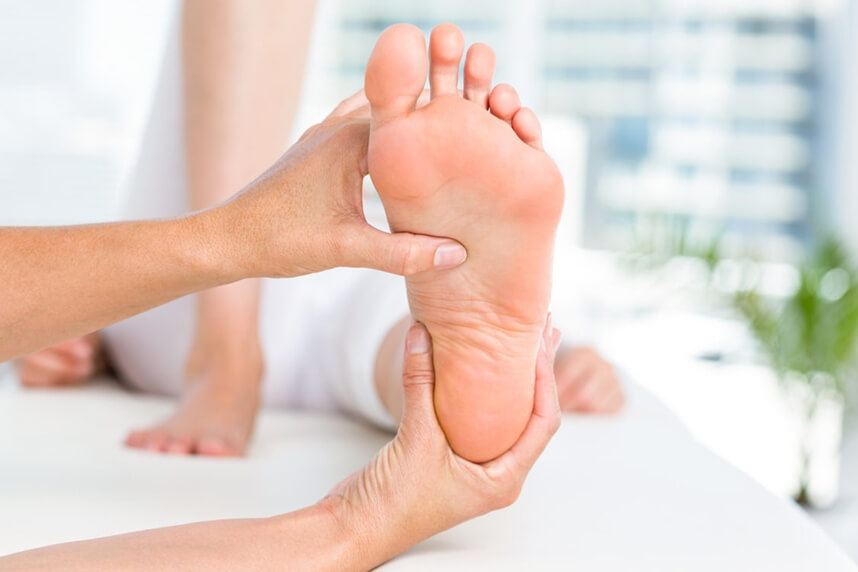
Discover the open MRI imaging center in our clinic. Centrokinetic has a state-of-the-art MRI machine, dedicated to musculoskeletal conditions, in the upper and lower limbs. The MRI machine is open so that people suffering from claustrophobia can do this investigation. The examination duration is, on average, 20 minutes.
Centrokinetic attaches great importance to the entire medical act: investigations necessary for correct diagnosis (ultrasound, MRI), surgery, and postoperative recovery.
Morton's neuroma is a reversible swelling that affects the common digital nerve (a sensory nerve in the toes) in the forefoot area, most commonly in the intermetatarsal space III and IV. The common digital nerve (which provides sensation but no motor function or movement to the toes) has an anatomical path to the toes, passing through a narrow anatomical space between the metatarsal ends and is susceptible to compression, more chosen if the shoes are inadequate.
If the nerve is compressed intermittently, chronic damage occurs, by increasing in volume. Therefore, it has even less space in this anatomical gorge and is more susceptible to compression, generating constant pain in the anterior area of the foot.
The swollen nerve, which results from this process (Morton's neuroma), reflects a reactive process inside the nerve, but the nerve can return to its previous non-inflamed state if recurrent compression ceases.
Most cases do not require surgical treatment, but if the symptoms do not subside with non-surgical treatments, an intervention will be needed to excise the neurinoma.
In most patients, the first line of management (which they will try on their own) is the adoption of shoes that relieve symptoms and avoid painful activities. More suitable, wider shoes with good shock absorption can help a lot. The patient will avoid tight shoes, respectively stiff shoes.
Theoretically, the orthosis can help by reducing the pressure on the front of the foot, but it often increases the volume in a shoe and thus increases the pressure, even more, making the forefoot even more painful.
The first line of intervention in most people is an intermetatarsal injection. In the clinic, our medical team uses steroids and local anesthetics. This treatment has a success rate of 65% or more to solve the problem by reducing the inflammation associated with the neuroma. One or two infiltrations may be required, associated with physiotherapy.
Often the neuroma, after infiltration is more painful, a few days later, the pain will decrease in intensity. It is a small chance of infection and thinning of the layer of fat under the skin in which the injection is introduced due to the use of steroids. This is an unusual complication and should be placed in the context of alternative treatment, which is surgical excision. This will leave a surgical scar in every case.
Surgical technique
The intervention is made under spinal anesthesia (spinal), which can be associated with local anesthesia to reduce postoperative pain. The incision is about 2-3 cm and is made on the back of the forefoot because the scars on the back heal much easier than those on the sole that must support the weight of the foot.
.png)
Neuromul este usor accesibil si excizat in totalitate cu tesutul nervos normal atasat. In imaginea de mai jos, nervul digital comun (1) se vede divizat 2 nervi digitali (2). Neuromul apare la intersecția acestor nervi. Operatia este scurta (15-20 minute) si necesita o singura zi de spitalizare.
.png)
The neuroma is easily accessible and fully excised with the normal nerve tissue attached. In the image below, the common digital nerve (1) is divided into 2 digital nerves (2). The neuroma occurs at the intersection of these nerves. The operation is short (15-20 minutes) and requires a single day of hospitalization.
The chance of neutralizing all symptoms after surgery is 65-70% and to be much better 85-90% through a complete recovery process. There is a 5-10% chance that after the surgery, the symptoms will not completely disappear.
The recurrence of a neuroma after complete surgical resection is possible in 1% or fewer patients.
Postoperatively
After the operation, the patient remains hospitalized for 1 day. He will receive pain medication and antibiotics during his hospitalization. The operated limb is not immobilized, and the patient is advised to do ankle exercises from the first postoperative day. Free walking is allowed immediately, no need to use crutches.
.jpg)
At home
Although recovery from an arthroscopic ankle arthrodesis is much faster than a classic operation, it will still take a few months for you to fully recover after the intervention. You should expect pain and discomfort for at least a week postoperatively. Ice will reduce pain and inflammation.
You must be careful not to lean on the operated ankle in the first weeks because the pain and discomfort can worsen. You can take a bath, but without wetting the bandage and incisions. The threads are suppressed at 14 days postoperatively.
It is very important to follow the recovery program strictly and seriously for the surgery to be a success. Our medical team works on average with the patient after this intervention, 18-24 weeks until complete recovery of the operated area.
Following any surgery, medical recovery plays an essential role in the social, professional, and family reintegration of the patient. Because we pursue the optimal outcome for each patient entering the clinic, recovery medicine from Centrokinetic is based on a team of experienced physicians and physical therapists and standardized medical protocols.
MAKE AN APPOINTMENT
FOR AN EXAMINATION
See here how you can make an appointment and the location of our clinics.
MAKE AN APPOINTMENT

































































































































